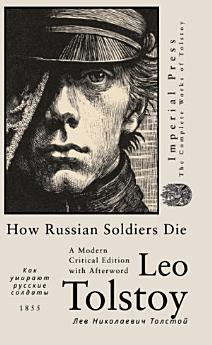How Russian Soldiers Die
O ovoj e-knjizi
"How Russian Soldiers Die," or "Как умирают русские солдаты (тревога)" (How Russian Soldiers Die (Alarm)) in its full Russian title, was composed in late 1854 while Tolstoy was serving in Sevastopol. This short story, based on a real-life episode from Tolstoy's own military service in the Caucasus, specifically in the fortress of Chakhgiri (Vozdvizhenskaya) in Chechnya, was initially intended for a journal titled "Военный листок" (Military Leaflet), which ultimately never saw publication. Consequently, the work remained unprinted during the author's lifetime, finally being published posthumously in 1928 as part of "Лев Толстой. Неизданные художественные произведения" (Leo Tolstoy. Unpublished Artistic Works). The story's direct foundation in Tolstoy's personal military experiences in the Caucasus ensures a raw, unembellished realism, providing an authentic, granular view of combat and its human cost, a departure from romanticized war narratives.
This critical reader's edition presents a modern translation of the original manuscript, crafted for the modern reader with clean, contemporary language and simplified sentence structures that clarify his complex Russian phrasing and specific antiquated references. Supplementary material enriches the text with autobiographical, historical, and linguistic context, including an afterword by the translator on Tolstoy’s personal history, impact, and intellectual legacy, an index of the philosophical concepts he employs—emphasizing Existentialism and influence by Schopenhauer—a comprehensive chronological list of his published writings, and a detailed timeline of his life, highlighting the personal relationships that shaped his philosophy.




